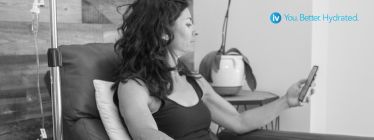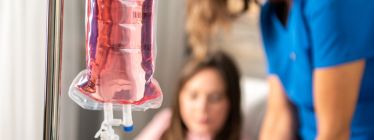Renew iv Blog

Intravenous Glutathione Enhances Cycling Time Trial Performance
By William Misner Ph.D.
ABSTRACT
A healthy, fit 61-year old male endurance athlete received four (4 each) intravenous glutathione treatments consisting of 100 mg/cc, using 10cc (total 1000 milligrams) diluted total of 20cc normal saline solution slow IV-push delivery (15 minutes). The tests were recorded 36-days during a previously established aerobic cycling fitness on a common course. There were no changes in training or dietary protocols other than the administration of glutathione intravenously. The subject’s pre-treatment timed-trial was 57:30 (minutes:seconds). Performance improved progressively following each of 4 separate intravenous treatments to a peak performance of 52:21(minutes:seconds), representing a remarkable performance gain of 7.2%. The only variable to account for this performance gain was the intravenous glutathione treatments.
DISCUSSION
Whether antioxidant supplementation will enhance performance remains controversial. Exercise-induced changes in antioxidant scavengers and associated enzymes (e.g., glutathione, tocopherol, glutathione peroxidase) provide clues about demand imposed on the defense system. Exercise training is reported conclusively to result in an augmented antioxidant system including a reduction in lipid peroxidation. Supplementation with antioxidants appears to reduce lipid peroxidation but has not been shown to enhance exercise performance.
Endogenous glutathione, a tri-peptide referred to as “Reduced Glutathione”, is composed of the three amino acids: L-Cysteine, Glycine, and L-Glutamic Acid. Smaller peptides of 2 or 3 amino acids are absorbed without further reduction or delay, but there is some debate as to the effectiveness of taking peptides as opposed to free amino acids for enhancing endogenous glutathione stores. Most glutathione is found in the liver where it detoxifies harmful compounds later excreted in bile. Some glutathione is found in the red and white blood cells, the lungs, and the intestinal tract. The primary biological function of glutathione is to act as a nonenzymatic reducing agent to assist in cysteine thiol side chains in a reduced state on the surface of proteins.
Reduced glutathione is involved in the synthesis and repair of DNA, assists the recycling of vitamins C and E, blocks free radical damage, enhances the antioxidant activity of vitamin C, facilitates the transport of amino acids, and plays a critical role in detoxification. It is the base material for several other key antioxidant enzyme systems: glutathione-peroxidase, glutathione-reductase, and glutathione- transferase. Decline in glutathione concentrations in intracellular fluids correlate directly with indicators of longevity. Intravenous glutathione administration may provide the most direct and effective route for increasing intracellular glutathione levels. The glutathione (GSH) antioxidant system is foremost among the cellular protective mechanisms. Depletion of this small molecule is the common consequence of increased formation of reactive oxygen species during increased cellular activities. This phenomenon may occur in the lymphocytes during the development of an immune response or also in muscular cells during strenuous exercise. Time and transit of dietary oral GSH substrates may be a positive means of glutathione repletion. However, cysteine, found in milk proteins, is reported to be a crucial limiting amino acid for intracellular GSH4. Replenishing glutathione from dietary supplementation of Whey, N-Acetyl Cysteine, and Glutathione, are time- and dosedependant, but may further be inhibited by the influence of age, exercise stress, or environmental toxins. Bypassing gastric channels and hepatic intervention activity by intravenous loading protocol presents a model for resolving these deficits.
Exhaustive exercise depletes glutathione and simultaneously generates free radicals. This is evidenced by increases in lipid peroxidation, glutathione oxidation, and oxidative protein damage. It is well known that activity of cytosolic enzymes in blood plasma is increased as a result of exhaustive exercise.
Researchers accessed the antioxidant status and markers of oxidative damage in the members of the U.S. Men’s Alpine Ski Team during 10 days of intense training. Seven measures of antioxidant status were determined using Trolox equivalent antioxidant capacity, uric oxidase, alpha-tocopherol, total glutathione, cytosolic glutathione peroxidase, and superoxide dismutase. The results suggested that antioxidant status of elite alpine skiers declined during training. Further studies of blood values determined the importance of glutathione upon potentiating maximal oxygen carrying capacity. Higher glutathione levels influence red blood cell count, hematocrit, and hemoglobin. Conversely when red blood cells, hematocrit, and hemoglobin are reduced during anemia, low glutathione is implicated; the addition of GSH has been shown to resolve the aforementioned low blood markers.
Researchers reported the effects of reduced glutathione parenterally administered resolved the status in patients suffering from chronic renal failure and undergoing hemodialysis. Reduced glutathione and placebo were given for 120 days in a randomized double-blind fashion and the following measurements were performed: red blood cells reduced and oxidized glutathione, plasma reduced and oxidized glutathione, hematocrit, hemoglobin, reticulocytes, serum iron, transferrin, indirect bilirubin, urea, creatinine, calcium, phosphate, parathyroid hormone and alkaline phosphatase. In the treated group, during the supplementation period, there was an increase in the levels of red blood cells and plasma reduced glutathione, hematocrit and hemoglobin and a concomitant decrease in plasma oxidized glutathione and reticulocytes with a maximum effect on the 120th day of therapy. In the placebotreated group there were no significant variations of the parameters considered during the study period. When the therapy, on patients undergoing treatment, was terminated there was a drop in the analyzed parameters, which fell to pretreatment values at the subsequent controls. These findings indicate that reduced glutathione could represent a useful drug in the treatment and management of anemia in patients affected by chronic renal failure. Therefore, increased glutathione may enhance the blood oxygen carrying capacity and improve depleted glutathione stores, which hypothetically translates into enhanced performance outcome.
DATA AND METHOD OF INVESTIGATION
I hypothesized that performance gain would occur by increasing intravenous glutathione. The 61-year endurance athlete completed 1000 miles of aerobic cycling to establish base fitness, then completed a timed-trial over an 18.4 mile undulating hill course prior to receiving intravenous glutathione, 100 mg/cc, 10cc (total 1000 milligrams) dose diluted to a total volume of 20cc with normal saline by slow IVpush over a 15 minute time period. Subsequent treatments followed at 7-10 day intervals during 36 aerobic training days. Aerobic training levels were imposed as controls with the intent to maintain, not to increase performance outcome. Constant aerobic protocols do not contribute to enhanced time trial performance outcome. Constant aerobic cycling training did not exceed 75% maximum heart rate or maximum oxygen consumption, while diet and supplement protocols were also held constant throughout the test period. To evaluate the influence of IV-Glutathione on performance outcome, a cycling timed trial was pre-test recorded, then compared to a second time trial which was recorded between IV-Glutathione #1 and #2, then concluded after IV-Glutathione #3 & #4, with a comparison of a the final timedtrial recorded on the same 18.4 miles course, using the same bicycle, under similar conditions.
These results are shown in tables I, II, and III below:

CONCLUSION
Performance gain 7-10 days after treatment #1 was significant (+2.1%) with total performance gains from intravenous glutathione +7.2% over 36 days (57:30 to 52:21 minutes:seconds), averaging a remarkable +1.8% per treatment administered. The only variable to account for the remarkable improvement in performance was four glutathione injections. Measure of the efficiency of oxygen metabolization is closely tied to the mechanism of rapid glutathione repletion to resolve depleted levels. By increasing GSH serum levels, enhanced performance may result. Further research is needed with aging, fit, healthy subjects, measuring a variety of physiologic and metabolic endpoints to determine if the results of this case study prevail, and if so, the mechanism of any such benefits achieved.
Acknowledgements
Dr. Stanley B. Covert M.D., the Medical Director of High Road Clinic in Elk, Washington, (509) 292-2748 graciously provided expertise in glutathione pathway effects and medical administration of intravenous glutathione to this subject. Dr. Coverts work in resolving macular degeneration disorder using this slow push intravenous protocol is without equal.
Disclosure
The author was the subject of this open label case study. Dr. Covert was the supervising prescribing physician. The subject or the supervising physician reports no competing interests.










